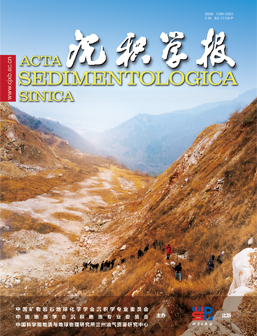Mounded Contourite in Middle Ordovician, northwestern Margin of Ordos Basin
doi: 10.14027/j.issn.1000-0550.2025.039
- Received Date: 2025-06-23
- Available Online: 2025-11-04
-
Key words:
- contour current /
- contourite /
- mounded contourite /
- Ordos Basin /
- Kelimoli Formation
Abstract: [Objective]Contourites well developed along southern and western margin of Ordos Basin, where sedimentary characteristics very abundant. It is ideal area of research contourites. The mounded contourite, a special type of contourite formed in Kelimoli formation of Ordovician in western margin of Ordos Basin. [Methods] Using outcrop, thin section, and paleacurrent, mechanism of mounded contourites had been researched. [Results] (1) Micrite-, calcisiltite-, and muddy contourites are well favour in the study area. The lithology is mainly dark grey motted thin micrtici and calsisiltitic limestone with wavy boundary. They are lenticular-shape with unstabe along layer. Horizontal-, wavy- bedding, erosive surfaces are usually founded. Bioclastic fragments are relative rich. Bioturbation and burrow are well developed. And the paleocurrent direction is northeast, paralleling to slope. (2) Mounded contourites are mounded shape, and NW-SE orientation, about parallel to slope. (3) Contourites dunes developed in mounded contourites showing mounded shape are micrite and calcisiltite, some muddy limestone interbedded very thin mudstone in lower and upper parts. The thickness of mounded contourites being fine-coarse-fine cycle, is 152 cm, can be divided into 11 units. 4 small mounded contourites developed with a series progradation. Bioturbation and burrows are usually formed. (4) The mounded contourite can be divided into early initial, middle formative and late decline stages. They were resulting from secondary flow showing helical feature when high energy contour current moved northeastward. Helical flow can lead to erosion and deposition and form moat. Anticlockwise secondary flow also can transport sediment, and develop mounded contourite on the side of moat facing to deep sea basin. [Conclusion] This study demonstrate characteristics, processes, and depositional model of mounded contourite, not only add one example of mounded contourites, but also help to reconstruct contour current circulation and recover the palaeoenvironment.
| Citation: | Mounded Contourite in Middle Ordovician, northwestern Margin of Ordos Basin[J]. Acta Sedimentologica Sinica. doi: 10.14027/j.issn.1000-0550.2025.039 |






 DownLoad:
DownLoad: